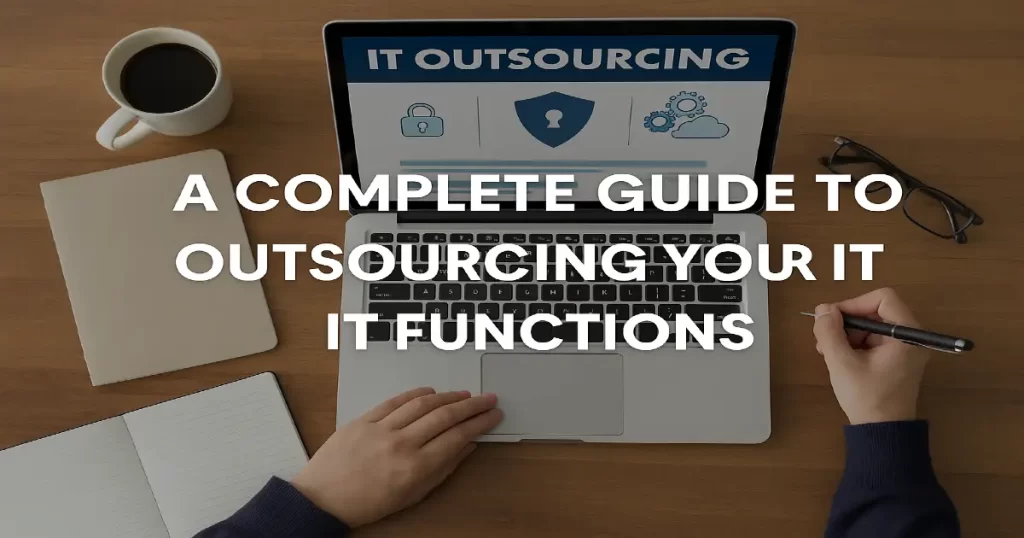Last Updated on June 20, 2025 by admin
In today’s fast-evolving digital landscape, outsourcing IT functions is no longer just an option—it’s a strategic necessity for businesses seeking efficiency, innovation, and cost savings. Whether you’re a startup, a growing SMB, or a large enterprise, knowing how to outsource IT services smartly can transform your operations, unlock scalability, and sharpen your competitive edge.
This guide dives deep into the types, benefits, challenges, and strategies of outsourcing IT services and provides actionable insights to help you make informed decisions.
What Is IT Outsourcing?
IT outsourcing refers to delegating your company’s IT functions—such as infrastructure management, support services, development, and cybersecurity—to a third-party provider. This helps reduce costs, improve efficiency, and free up internal resources for strategic growth.
Common IT Functions That Are Outsourced:
- Managed IT services (MSPs)
- IT support & helpdesk services
- Network & infrastructure management
- Web and mobile development
- Cloud computing solutions
- Cybersecurity services
- IoT (internet of things)
- IT consulting and strategy
- Data backup & disaster recovery
- Software design, testing, and integration
Different Types of IT Outsourcing Models
There are several outsourcing models businesses can choose from, depending on location, cost, and strategic needs:
Onshore IT Outsourcing
Outsourcing to a service provider in the same country. Useful when language, culture, and time zone alignment are critical.
Nearshore IT Outsourcing
Partnering with IT providers in neighboring countries. Offers cost savings while minimizing cultural and time zone gaps.
Offshore IT Outsourcing
Outsourcing to distant countries (e.g., India, Philippines) for major cost benefits. Ideal for 24/7 support and access to global talent.
Cloud-Based IT Outsourcing
Enables remote management of IT infrastructure and services through platforms like AWS, Azure, or Google Cloud.
Managed IT Services
A long-term partnership where a third-party provider continuously manages and improves your IT systems under a service level agreement (SLA).
Top Benefits of IT Outsourcing
- Cost Efficiency: Reduce operational expenses by eliminating the need for in-house infrastructure and personnel. No capital investment needed.
- Access to Specialized Expertise: Gain access to a global pool of certified professionals with cutting-edge knowledge and tools.
- Enhanced Focus on Core Business: Let your internal teams focus on innovation and growth while experts handle IT tasks.
- Scalability & Flexibility: Scale IT resources up or down based on project demands without hiring or training new staff.
- Around-the-Clock Support: Many offshore and managed service providers offer 24/7 IT support, minimizing downtime and improving business continuity.
- Improved Risk Management: Leverage the security frameworks, compliance standards, and disaster recovery protocols of established IT providers.
Who Should Consider IT Outsourcing?
- Small Businesses: Limited budgets but growing needs
- Mid-size Companies: Needing agility, innovation, and access to scalable technology
- Large Enterprises: Wanting to improve efficiency and focus on digital transformation
Key Considerations Before Outsourcing IT Services
- Define Objectives Clearly: Know what you want—cost savings, scalability, or innovation.
- Choose the Right Partner: Look for experience, certifications, industry specialization, and SLA transparency.
- Data Security & Compliance: Ensure the provider adheres to GDPR, HIPAA, or other relevant standards.
- Communication & Collaboration: Establish clear communication protocols to avoid silos.
- Technology Stack & Tools: Ensure compatibility with your existing platforms and systems.
Common Pitfalls to Avoid in IT Outsourcing
- Focusing only on cost rather than value
- Poorly defined SLAs and expectations
- Ignoring cultural and time zone differences
- Underestimating change management needs
FAQs About Outsourcing IT Services
Q. What are the most commonly outsourced IT services?
A.: Managed IT services, helpdesk support, cloud hosting, cybersecurity, and development.
Q. Is outsourcing IT support safe?
A.: Yes—if you choose a reputable provider with strong security practices and compliance frameworks.
Q. How does IT outsourcing benefit small businesses?
A.: By reducing costs, improving service quality, and giving access to technologies and expertise they might not afford in-house.
Q. What are the signs you need to outsource IT?
A.: Frequent downtimes, rising in-house IT costs, lack of specialized expertise, or inability to keep up with technology trends.
Final Thoughts: Should You Outsource Your IT Services?
If your business is seeking greater flexibility, improved service delivery, and access to global expertise, IT outsourcing is not just beneficial—it’s transformational. Partnering with the right provider helps you align technology with business goals while reducing overhead.
Need help choosing the right IT outsourcing strategy? Contact to any reputed agency today to start your digital transformation journey.



